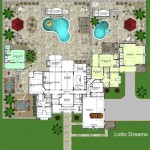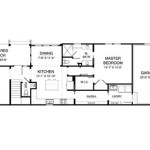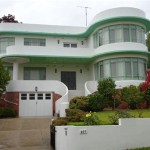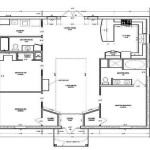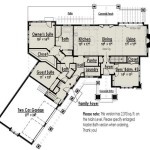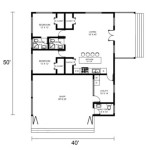Small House Plans on Stilts: Elevated Living Simplified
Small house plans on stilts, also known as pier and beam foundations or elevated homes, offer a unique blend of practicality and aesthetic appeal. This construction method involves raising the main structure of a small house above ground level using vertical supports, typically made of wood, concrete, or steel. While not suitable for every location or individual need, this design choice presents several advantages, making it a compelling option for certain terrains, climate conditions, and lifestyle preferences. This article explores various aspects of small house plans on stilts, including their benefits, design considerations, structural elements, and relevant building codes, providing a comprehensive overview of this specialized architectural approach.
Advantages of Elevated Construction
Choosing to build a small house on stilts presents a significant number of potential advantages. These advantages range from practical solutions to environmental challenges, to opportunities for unique design and increased property value.
One of the primary benefits is flood protection. Elevating the living space above the anticipated flood level mitigates the risk of water damage significantly. This is especially crucial in coastal areas, floodplains, or regions prone to heavy rainfall. By raising the house, the critical building components such as electrical systems, plumbing, and structural supports are less exposed to potential floodwaters, reducing the likelihood of costly repairs and property loss.
Another notable benefit is improved ventilation. The open space beneath the house allows for natural airflow, which can help regulate temperature and reduce humidity. This passive cooling effect can lead to lower energy consumption, particularly in warmer climates. The increased airflow can also prevent the buildup of mold and mildew, contributing to a healthier indoor environment.
Pest control also becomes more manageable with an elevated structure. The elevated design creates a barrier against ground-dwelling pests like termites, rodents, and snakes, making it more difficult for them to access the house. Regular inspections and preventative measures can further minimize the risk of pest infestations.
Furthermore, building on stilts can minimize the environmental impact on the building site. By reducing the alteration of the natural topography and minimizing the footprint on the ground, this construction method helps preserve the existing vegetation and soil structure. This is particularly important in environmentally sensitive areas or locations with challenging terrain.
Finally, an elevated house can provide enhanced views of the surrounding landscape. Raising the house above ground level can offer panoramic views that would otherwise be obstructed, creating a more enjoyable living experience.
Design Considerations for Small Houses on Stilts
Designing a small house on stilts requires careful consideration of several factors to ensure structural integrity, functionality, and aesthetic appeal. Planning and design are extremely important to the overall success of the structure.
The size and layout of the house must be carefully planned to maximize space utilization. Small houses often require creative storage solutions and multi-functional spaces to make the most of the limited square footage. The layout should be designed to facilitate easy access and circulation, considering the elevated nature of the structure.
Accessibility is a significant consideration. A staircase is typically required to access the living space, which may pose a challenge for individuals with mobility issues. Ramps or elevators can be incorporated into the design to provide accessibility for all occupants and visitors. The design should also comply with relevant accessibility codes and guidelines.
The architectural style should complement the surrounding environment and the design of the house. The elevated structure can be integrated seamlessly into various architectural styles, from traditional to modern. The choice of materials and finishes should be carefully considered to enhance the overall aesthetic appeal.
The design of the stilts themselves plays a crucial role in the overall appearance of the house. The type of material used for the stilts, their spacing, and their design contribute to the visual impact of the structure. The stilts can be concealed with cladding or incorporated as an integral part of the architectural design.
The space beneath the house can be utilized for various purposes, such as parking, storage, or outdoor living areas. The design of this space should be integrated with the overall design of the house, creating a functional and aesthetically pleasing environment.
Integration with landscape and natural features such as trees is crucial. The design should integrate the natural beauty surrounding the structure.
Structural Elements and Building Codes
The structural integrity of a small house on stilts is paramount, requiring careful engineering and construction techniques. Adherence to building codes and regulations is crucial to ensure the safety and durability of the structure.
The foundation system, consisting of the stilts and the supporting structure, must be designed to withstand various loads, including the weight of the house, wind loads, and seismic forces. The type of material used for the stilts, their spacing, and their depth are determined by the specific site conditions and the structural requirements.
The connection between the stilts and the house frame is critical to ensure structural stability. This connection must be designed to transfer loads efficiently and prevent movement or displacement. The use of appropriate fasteners and connection details is essential.
Bracing is used to provide lateral stability to the structure, preventing it from swaying or collapsing under wind or seismic loads. Diagonal bracing, shear walls, or other bracing techniques are typically employed to enhance the structural rigidity of the building.
Building codes and regulations vary depending on the location, but typically address issues such as foundation design, wind resistance, flood resistance, and seismic design. Compliance with these codes is mandatory to ensure the safety and integrity of the structure.
Professional engineering services are usually required for the design of small houses on stilts. A qualified structural engineer can assess the site conditions, perform structural calculations, and prepare detailed construction documents to ensure that the house is built to meet all applicable codes and standards.
Regular inspections during the construction process are essential to ensure that the work is being performed in accordance with the design documents and the building codes. Qualified inspectors can identify potential problems early on and ensure that they are corrected before they become major issues.
The building codes typically cover such areas as zoning laws dictating building height restrictions, foundation type, proximity to adjacent properties, and materials used.
In areas susceptible to specific natural disasters, additional codes and regulations are implemented, such as hurricane resistant standards in coastal areas or earthquake resistance standards in seismically active zones. The building codes also cover safety standards such as stair dimensions, handrail requirements, and fire safety measures.

Piling Elevated Stilt And Pier Small House Plans Coastal

Tiny House Plan On Stilts 44180td Architectural Designs Plans

House On Stilts Stilt Plans Beach Cottage

Home Plan Ch464

Family S 576 Sq Ft Stilt Beach House

House Design Plan Ch539 3 Stilt Plans On Stilts Carriage

Modern Resort Type House With Stilt Concept Pinoy Eplans

Home Plan Ch536

Pin By Erik Brian On Home Design Stilt House Plans Stilts Affordable Village

Lofty Design Ideas For Tiny Homes On Stilts The Life


